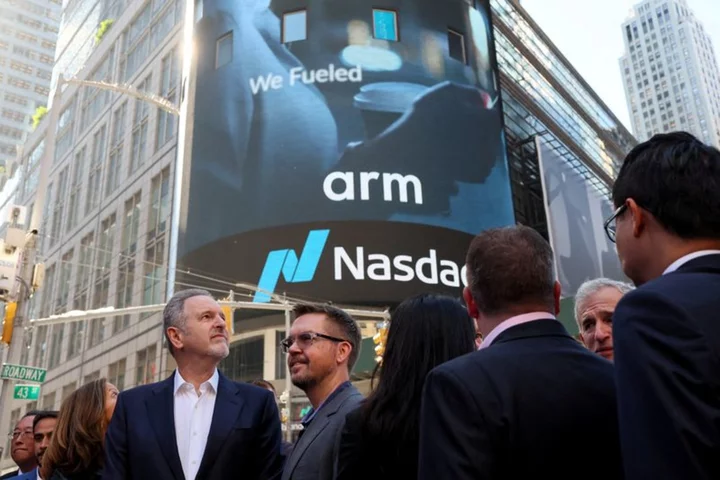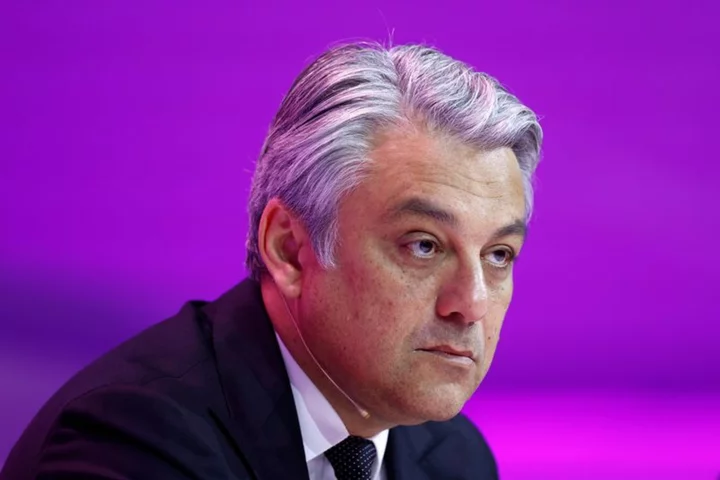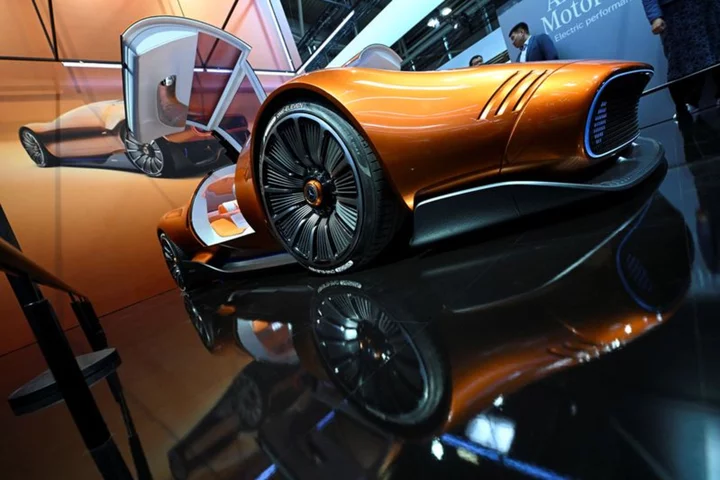(Reuters) -Shares of SoftBank's Arm Holdings rose before the bell on Friday, extending gains from a stellar Nasdaq debut that valued the British chip designer at $65 billion, in a relief to the U.S. IPO market facing a drought in listings.
The stock that closed 25% higher than its offer price of $51 on Thursday was now up 34.2% from that level at $68.44.
"The huge enthusiasm around trading suggests there is very much still appetite for high-growth names, and there's growing hope that the IPO market will now become more buoyant next year," said Sophie Lund-Yates, lead equity analyst at Hargreaves Lansdown.
Analysts expect more trading volatility for the Arm stock if it draws more interest from AI-focused retail investors and also due to a limited number of publicly traded shares as SoftBank continues to own about 90% stake.
Arm told potential investors in New York when it began marketing the IPO that the cloud computing market could be an area of growth for it.
It currently has just a 10% share in the segment that was expected to grow at an annual rate of 17% through 2025, mainly due to the advances in AI.
"Arm generates very high margin revenue, but much of that is put back into research and development," said Michael Ashley Schulman, partner and CIO at Running Point Capital Advisors.
Analysts have said Arm can potentially ride on the coattails of Nvidia, which has been the biggest beneficiary of the AI boom, as its chips would need energy-efficient central processing units (CPUs) - a speciality of Arm.
As of Thursday's close, Arm has a price-to-earnings ratio based on the last 12 months of 163, compared to 110 for Nvidia, according to LSEG data.
"The timing of the IPO is a clear signal that owner SoftBank, which still owns 90% of ARM, wanted to capitalize on the AI wave," Lund-Yates said.
Financials disclosed ahead of the IPO showed that Arm's full-year sales had fallen marginally amid a broader slump in the demand for smartphones across the world.
(Reporting by Manya Saini and Niket Nishant in Bengaluru; Editing by Arun Koyyur)









